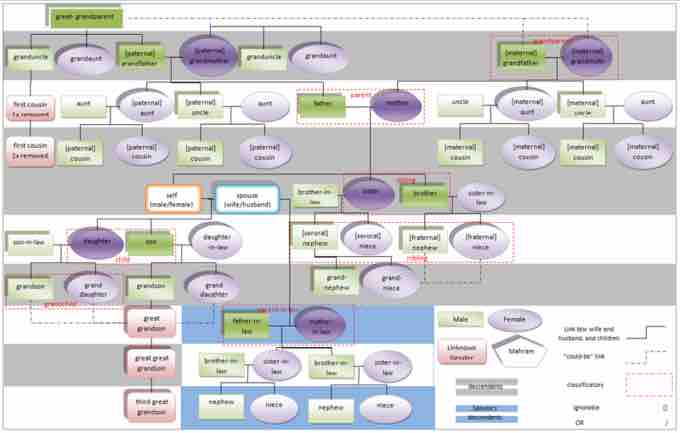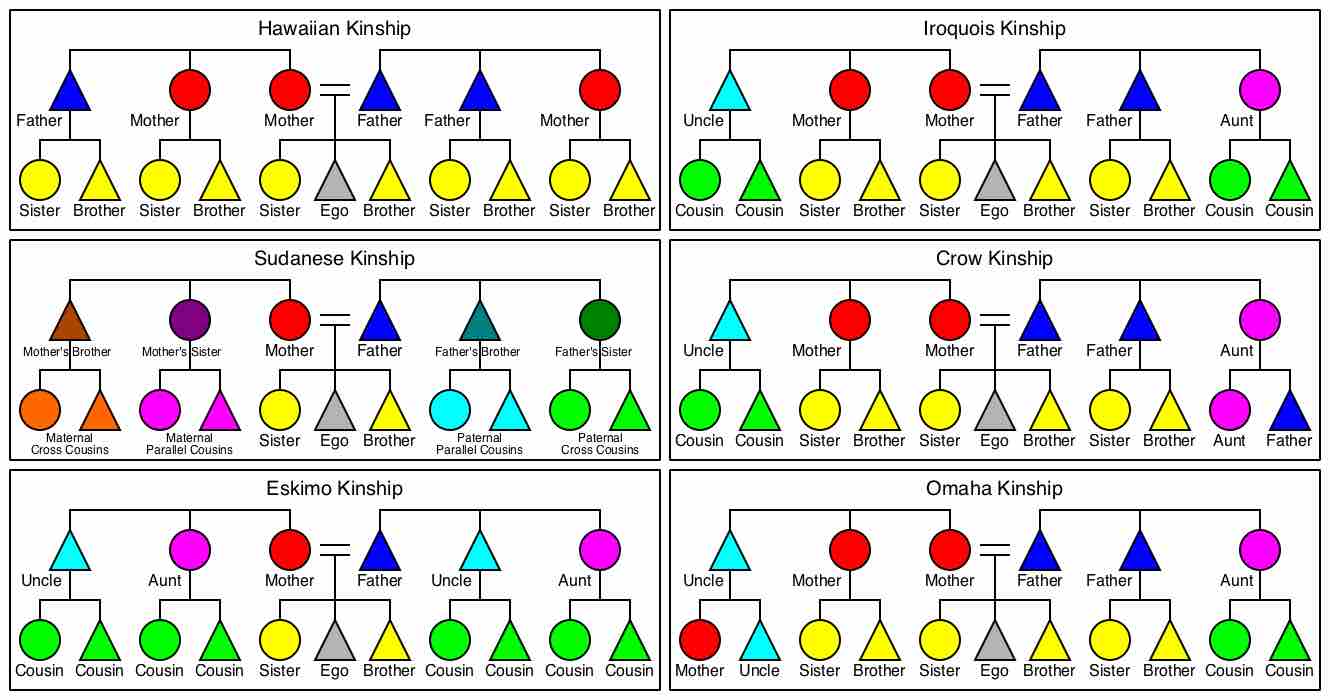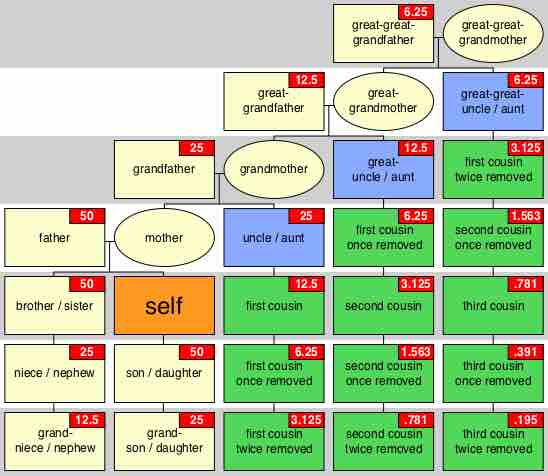Kinship is a term with various meanings depending upon the context. In anthropology, kinship refers to the web of social relationships that form an important part of human lives. In other disciplines, kinship may have a different meaning. In biology, it typically refers to the degree of genetic relatedness or coefficient of relationships between individual members of a species. In a more general sense, kinship may refer to a similarity or affinity between entities on the basis of some or all of their characteristics.
System of Kinship
One of the founders of anthropological relationship research was Lewis Henry Morgan, who wrote Systems of Consanguinity and Affinity of the Human Family (1871). Members of a society may use kinship terms without being biologically related, a fact already evident in Morgan's use of the term "affinity" within his concept of the "system of kinship. " The most lasting of Morgan's contributions was his discovery of the difference between descriptive and classificatory kinship, which situates broad kinship classes on the basis of imputing abstract social patterns of relationships having little or no overall relation to genetic closeness.
Kinship systems as defined in anthropological texts and ethnographies were seen as constituted by patterns of behavior and attitudes in relation to the differences in terminology for referring to relationships as well as for addressing others. Many anthropologists went so far as to see, in these patterns of kinship, strong relations between kinship categories and patterns of marriage, including forms of marriage, restrictions on marriage, and cultural concepts of the boundaries of incest .

Mahrams Chart
Family chart. Note that not all relatives are shown in the chart (specially at step-relatives).
Biological Relationships
Ideas about kinship do not necessarily assume any biological relationship between individuals, rather just close associations. Malinowski, in his ethnographic study of sexual behavior on the Trobriand Islands, noted that the Trobrianders did not believe pregnancy to be the result of sexual intercourse between the man and the woman, and they denied that there was any physiological relationship between father and child. Nevertheless, while paternity was unknown in the "full biological sense," for a woman to have a child without having a husband was considered socially undesirable. Fatherhood was therefore recognized as a social role; the woman's husband is the "man whose role and duty it is to take the child in his arms and to help her in nursing and bringing it up"; "Thus, though the natives are ignorant of any physiological need for a male in the constitution of the family, they regard him as indispensable socially. "
Descent and the Family
Descent, like family systems, is one of the major concepts of anthropology. Cultures worldwide possess a wide range of systems of tracing kinship and descent. Anthropologists break these down into simple concepts about what is thought to be common among many different cultures. A descent group is a social group whose members have common ancestry. An unilineal society is one in which the descent of an individual is reckoned either from the mother's or the father's line of descent. With matrilineal descent, individuals belong to their mother's descent group. Matrilineal descent includes the mother's brother, who in some societies may pass along inheritance to the sister's children or succession to a sister's son. With patrilineal descent, individuals belong to their father's descent group. Societies with the Iroquois kinship system are typically uniliineal, while the Iroquois proper are specifically matrilineal. The Western model of a nuclear family consists of a couple and its children. The nuclear family is ego-centered and impermanent, while descent groups are permanent and reckoned according to a single ancestor .

Kinship Systems
A broad comparison of (left, top-to-bottom) Hawaiian, Sudanese, Eskimo, (right, top-to-bottom) Iroquois, Crow and Omaha kinship systems.

Cousin Tree kinship
Family tree showing the relationship of each person to the orange person. Cousins are colored green. The genetic kinship degree of relationship is marked in red boxes by percentage (%).